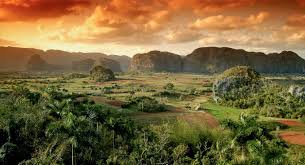
EL VALLE DE VIÑALES, UN PAISAJE CULTURAL REFORZADO POR UNA ARQUITECTURA UNICA EN EL MUNDO. PHOTOS.
El valle de Viñales es un valle en la provincia de Pinar del Río, en el sector occidental de Cuba. Se encuentra en la Sierra de los Órganos, en la parte más occidental de la Cordillera de Guaniguanico.
La zona que comprende el valle y gran parte de la sierra que lo rodea en 1999 fue designada parque nacional de Cuba y en diciembre de ese mismo año fue declarado Patrimonio Natural de la Humanidad por la UNESCO.
El valle se encuentra en el municipio de Viñales, de la provincia de Pinar del Río, concretamente en el centro del municipio, situado a 178 km de La Habana y a 25 km de la ciudad de Pinar del Río.
PAISAJE UNICO EN EL MUNDO
El valle de Viñales en la Sierra de los que órganos cerca del extremo occidental de la isla de Cuba es un paisaje kárstico excepcional rodeado de montañas y salpicado de afloramientos de la espectacular bóveda-como la piedra caliza (mogotes) que se elevan tan alto como 300 m. Colonised a principios del siglo XIX, el valle tiene tierra fértil y un clima propicio para el desarrollo de la ganadería y los cultivos de forraje y alimento.
Los métodos tradicionales de agricultura han sobrevivido prácticamente sin cambios en este plano durante varios siglos, particularmente para el cultivo de tabaco. Se ha mejorado la calidad de este paisaje cultural por la arquitectura vernácula de sus granjas y aldeas, donde sobrevive una sociedad multicultural Rica, su arquitectura, artesanía y música que ilustran el desarrollo cultural de Cuba y las islas del Caribe.
El valle de Viñales está rodeado de montañas y su paisaje se entremezcla con los espectaculares afloramientos rocosos. Las técnicas tradicionales todavía están en uso para la producción agrícola, especialmente de tabaco. La calidad de este paisaje cultural se ve reforzada por la arquitectura vernácula de sus granjas y aldeas, donde un rico sobrevive la sociedad multiétnica, que ilustran el desarrollo cultural de las islas del Caribe y de Cuba.
El impresionante paisaje kárstico del Valle de Viñales es notable por sus mogotes, una serie de colinas altas, redondeadas que se elevan abruptamente desde la llanura plana del valle. Es también significativo para sus asociaciones culturales, particularmente sus prácticas agrícolas tradicionales relacionadas con el cultivo de tabaco. Porque los métodos mecánicos de cultivo y cosecha reducir la calidad de tabaco, tiempo métodos tales como la tracción animal todavía se utilizan. El paisaje es en gran parte rural en carácter. La mayoría de los edificios dispersadas por la llanura es simple, construidas con materiales locales y naturales y utilizado como viviendas o granjas familiares. El pueblo de Viñales, encadenado hacia fuera a lo largo de su calle principal, ha conservado su diseño original y muchos interesantes ejemplos de arquitectura colonial, sobre todo una planta casas de madera con porches.
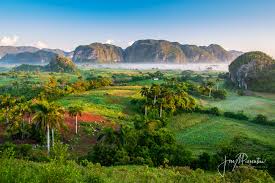
THE VIÑALES VALLEY, A CULTURAL LANDSCAPE ENHANCED BY UNIQUE ARCHITECTURE. PHOTOS.
The Viñales Valley is a valley in the province of Pinar del Río, in western Cuba. It is located in the Sierra de los Órganos, in the westernmost part of the Guaniguanico mountain range.
The area comprising the valley and much of the surrounding mountain range was designated a Cuban national park in 1999, and in December of that same year it was declared a UNESCO World Heritage Site.
The valley is located in the municipality of Viñales, in the province of Pinar del Río, specifically in the center of the municipality, 178 km from Havana and 25 km from the city of Pinar del Río.
UNIQUE LANDSCAPE IN THE WORLD
The Viñales Valley in the Sierra de los Organos near the western tip of the island of Cuba is an exceptional karst landscape surrounded by mountains and dotted with spectacular vault-like limestone outcrops (mogotes) that rise as high as 300 m. Colonized in the early 19th century, the valley has fertile soil and a climate conducive to livestock farming and the cultivation of fodder and food crops.
Traditional agricultural methods have survived virtually unchanged in this valley for several centuries, particularly for the cultivation of tobacco. The quality of this cultural landscape has been enhanced by the vernacular architecture of its farms and villages, where a rich multicultural society survives, with its architecture, crafts, and music illustrating the cultural development of Cuba and the Caribbean islands.
The Viñales Valley is surrounded by mountains, and its landscape is interspersed with spectacular rock outcrops. Traditional techniques are still used for agricultural production, especially of tobacco. The quality of this cultural landscape is enhanced by the vernacular architecture of its farms and villages, where a rich multiethnic society survives, illustrating the cultural development of the Caribbean islands and Cuba.
The impressive karst landscape of the Viñales Valley is notable for its mogotes, a series of tall, rounded hills that rise abruptly from the flat valley plain. It is also significant for its cultural associations, particularly its traditional agricultural practices related to tobacco cultivation. Because mechanical methods of cultivation and harvesting reduce the quality of tobacco, methods such as animal traction are still used. The landscape is largely rural in character. Most of the buildings scattered across the plain are simple, built with local and natural materials and used as homes or family farms. The village of Viñales, strung out along its main street, has retained its original layout and many interesting examples of colonial architecture, especially single-story wooden houses with porches.
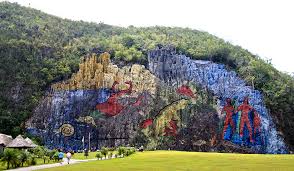
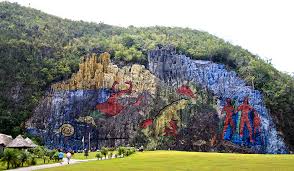
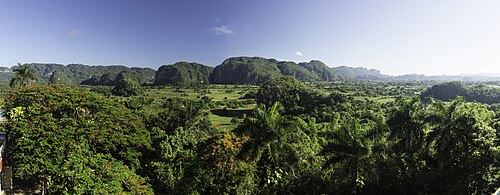
Agencies/ Unesco/ ValledeVinalesCuba/ Internet Photos/Extractos/ Excerpts/ www.TheCubanHistory.com Arnoldo Varona.
THE CUBAN HISTORY, HOLLYWOOD.




 EL VALLE DE VIÑALES, UN PAISAJE CULTURAL REFORZADO POR UNA ARQUITECTURA UNICA EN EL MUNDO. PHOTOS. * THE VIÑALES VALLEY, A CULTURAL LANDSCAPE ENHANCED BY UNIQUE ARCHITECTURE. PHOTOS.
EL VALLE DE VIÑALES, UN PAISAJE CULTURAL REFORZADO POR UNA ARQUITECTURA UNICA EN EL MUNDO. PHOTOS. * THE VIÑALES VALLEY, A CULTURAL LANDSCAPE ENHANCED BY UNIQUE ARCHITECTURE. PHOTOS.